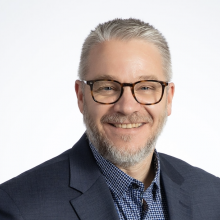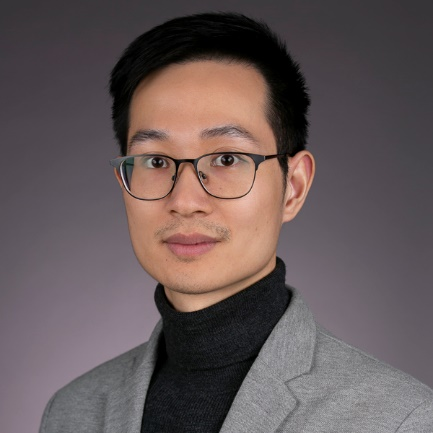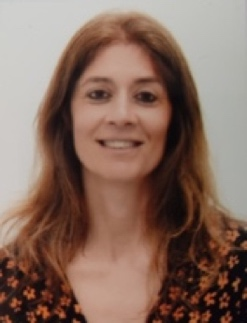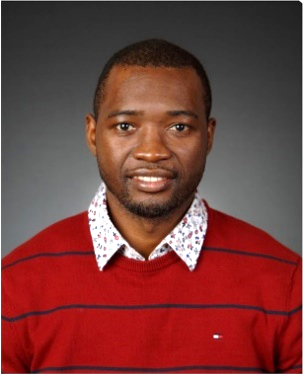|
Circular Ammonia-Hydrogen Enabled by Plasma-Catalysis | Dr. Sylvain Coulombe
With its high hydrogen content, ammonia is increasingly seen as a scalable carbon-free energy carrier for hard to decarbonize sectors such as long-haul transport and industrial heating. As electricity becomes a wider-spread energy commodity and the pressure for carbon emissions reduction increases, there are strong incentives for the development of all-electric ammonia-hydrogen conversion processes. In contrast to the established ammonia synthesis industry which relies on large-scale concentrated plants, the more geographically distributed and equitable access to renewable electricity calls for downsized processes and plants, on-demand generation and use, and scalability through parallelization. Similarly, there are opportunities for the agriculture sector for onsite ammonia-based fertilizer production where renewable electricity is available. Plasma, the fourth state of matter, is an energetic chemical processing environment sustained entirely by electricity and enabling reaction conditions not achievable via standard thermochemistry. In the context of gas conversion, the plasma can be used for the dry and environment-friendly synthesis and regeneration of catalysts as well as the synthesis and recycling of energy vectors such as hydrogen and ammonia. In this short talk, I will introduce key concepts of plasma chemistry, catalyst synthesis and regeneration, and outline the state-of-the-art in plasma-catalytic processing of ammonia and hydrogen.
|

Dr. Sylvain Coulombe is a registered Engineering Physicist and Professor of Chemical Engineering at McGill University since 2001. From 1997 to 2001 he was a Senior Research Scientist with GE Research (USA). From 2018 to 2021 he was Associate Vice-Principal, Innovation and Partnerships with McGill University. He is an expert in chemical process electrification using plasmas. He develops plasma sources and processes for nanomaterial and nanostructure synthesis, electrical power-to-X, circular fuels and materials, and powder processing. He has co-authored more than 300 peer-reviewed publications and conference contributions. He is Director of the McGill Centre for Innovation in Storage and Conversion of Energy since January 2022, and co-leader of the Catalytic & Plasma Process Engineering laboratory. He teaches courses in plasma engineering, resource recovery and circular use, transport phenomena, and process instrumentation and control.
|
Design and analysis of power-to-ammonia | Dr. XiaoYu Wu
|
|
Ammonia is a versatile chemical that is distributed and traded widely as a commodity for the fertilizer and refrigeration industries, and it also has the potential to be a low-emission fuel, hydrogen carrier and energy storage medium. Converting clean electricity to ammonia (i.e., power-to-ammonia, or P2A) is a critical process to decarbonize the use of ammonia in agriculture, transportation, and energy sectors. In this talk, I will highlight the research activities in my group on P2A processes. We designed a P2A plant using offshore wind power from Sable Island, Nova Scotia and conducted a techno-economic analysis to study electrified ammonia production. The levelized cost of ammonia was found to be highly dependent on the electrolyzer efficiency and capacity factor. Even though the offshore wind farms in Atlantic Canada are expected to have high-capacity factors, we still found it necessary to connect the plant with the electrical grid to maintain high ammonia outputs. Yet grid-connection could raise the carbon intensities of the P2A process to a higher level than the conventional fossil-fuel based ammonia production.
|
|
 Dr. XiaoYu Wu is an assistant professor in the Department of Mechanical and Mechatronics Engineering at the University of Waterloo. He received his B.Sc. and M.Sc. degrees from Zhejiang University, and Ph.D. from MIT. His research group, Greener Production @ Waterloo, combines expertise in thermal science, material engineering and techno-economics to develop sustainable technologies for energy conversion and chemical production, such as hydrogen and ammonia conversion, energy storage, and membrane separation. He has published more than 20 papers in peer-reviewed journals such as Progress in Energy and Combustion Science and Applied Catalysis B: Environmental. Dr. Wu also serves on the Editorial Board for the International Journal of Green Energy and is an Associate Editor for Frontiers in Energy Research. Dr. XiaoYu Wu is an assistant professor in the Department of Mechanical and Mechatronics Engineering at the University of Waterloo. He received his B.Sc. and M.Sc. degrees from Zhejiang University, and Ph.D. from MIT. His research group, Greener Production @ Waterloo, combines expertise in thermal science, material engineering and techno-economics to develop sustainable technologies for energy conversion and chemical production, such as hydrogen and ammonia conversion, energy storage, and membrane separation. He has published more than 20 papers in peer-reviewed journals such as Progress in Energy and Combustion Science and Applied Catalysis B: Environmental. Dr. Wu also serves on the Editorial Board for the International Journal of Green Energy and is an Associate Editor for Frontiers in Energy Research.
|
|
Panel 2: Environmental issues
|
|
The GEMAC group overview | Dr. Vera Rodrigues
In this WorKshop, we will present the University of Aveiro, (UA) with a particular focus on the Department of Environment and Planning of UA and the Centre for Environmental and Marine Studies (CESAM), of which Alexandra Monteiro and Vera Rodrigues are integrated researchers, followed by a presentation of the research group on emissions, modelling and climate change (GEMAC). We will briefly present a set of research projects in which we are involved. Research projects funded by the European programs Horizon 2020 and Horizon Europe (e.g., FirEUrisk, DISTENDER); by the Portuguese National Research Foundation (e.g., Alice, OptWire, Prunning, SmokeStorm, BigAir), among others.
|
|
 Dr. Vera Rodrigues successfully concluded the M.Sc. degree in Environmental Engineering from the University of Aveiro in 2009. She received her Ph.D. in Fluid Mechanics in 2015 from Ecole Centrale de Nantes, France. Her post-doctoral experience started in 2016 and she is currently an integrated member of the Centre for Environmental and Marine Studies. During this period, the researcher was actively involved in several international and national research projects. Her main research interests are related to urban air quality, transport emissions and local scale modelling, with more than 30 SCI papers published. Dr. Vera Rodrigues successfully concluded the M.Sc. degree in Environmental Engineering from the University of Aveiro in 2009. She received her Ph.D. in Fluid Mechanics in 2015 from Ecole Centrale de Nantes, France. Her post-doctoral experience started in 2016 and she is currently an integrated member of the Centre for Environmental and Marine Studies. During this period, the researcher was actively involved in several international and national research projects. Her main research interests are related to urban air quality, transport emissions and local scale modelling, with more than 30 SCI papers published.
|
| |
|
The EMERGE & FONDA projects | Dr. Alexandra Monteiro
Two of the GEMAC European projects – EMERGE and FONDA – will be presented in detail, both funded by the European Commission (Horizon 2020). The EMERGE project aims at quantifying and evaluating the effects of potential emission reduction solutions for shipping in Europe and developing effective strategies and measures to reduce the environmental impacts of shipping, where ammonia is a potential alternative fuel to be use for decarbonization process. By other side, the FONDA project aims to modelling and mapping the emissions, transport, transformation and deposition of reactive nitrogen compounds, and then assess its impact on air quality, ecosystems and biodiversity.
|
|
 Dr. Alexandra Monteiro holds a PhD in Environmental Science from the University of Aveiro (2007) and a Master in Atmospheric pollution (2003). She is presently Assistant Researcher with Habilitation at this University, belonging to the Centre for Environment and Marine Studies, where she is the coordinator of the research group APM (Atmospheric Process and Modelling) composed by more than 20 researchers. She participates in several European and national research projects, also as national coordinator. Her main research interests are related to atmospheric emission pollutants, air quality modelling and its impacts on climate and human health, with more than 100 SCI papers published. Dr. Alexandra Monteiro holds a PhD in Environmental Science from the University of Aveiro (2007) and a Master in Atmospheric pollution (2003). She is presently Assistant Researcher with Habilitation at this University, belonging to the Centre for Environment and Marine Studies, where she is the coordinator of the research group APM (Atmospheric Process and Modelling) composed by more than 20 researchers. She participates in several European and national research projects, also as national coordinator. Her main research interests are related to atmospheric emission pollutants, air quality modelling and its impacts on climate and human health, with more than 100 SCI papers published.
|
|
Electrooxidation of urea and ammonia for wastewater treatment | Dr. Anna Klinkova
The growing human population is closely connected to the increasing agricultural demands for fertilizers containing urea and ammonia. As a result, large amounts of wastewater enriched with urea and ammonia are released to the environment from the agricultural runoff and the industrial plants producing urea- and ammonia-based fertilizers. If left untreated, this nitrogenous waste decomposes into nitrogen oxides, which play a major role in causing respiratory diseases, cancer, acid rain, smog, and contribute to the destruction of fragile ecosystems by enhancing cyanobacteria algae blooms. Electrooxidation of urea and/or ammonia provides a route to treat the wastewater containing these compounds, while simultaneously producing value-added products.
|
| |
|
 After receiving her B.Sc. in chemistry from Saint Petersburg State University, Dr. Anna Klinkova did her M.Sc. at the Center for Photochemical Sciences at Bowling Green State University working on the synthesis of semiconductor quantum dots for solar cells and photocatalysis. Anna received her Ph.D. in materials chemistry from the University of Toronto in 2015 where her research evolved around nanoparticle self-assembly, plasmonics, and catalysis. After graduation, she worked on carbon dioxide electroreduction catalysts at the UofT as a Connaught postdoctoral fellow. She started her independent research career at the University of Waterloo in Fall 2017 as an assistant professor and received tenure in 2023. Her current research interests include reaction mechanism studies and the synthesis, physical properties, and structural stability of nanoscale materials and their applications in sustainable chemistry. After receiving her B.Sc. in chemistry from Saint Petersburg State University, Dr. Anna Klinkova did her M.Sc. at the Center for Photochemical Sciences at Bowling Green State University working on the synthesis of semiconductor quantum dots for solar cells and photocatalysis. Anna received her Ph.D. in materials chemistry from the University of Toronto in 2015 where her research evolved around nanoparticle self-assembly, plasmonics, and catalysis. After graduation, she worked on carbon dioxide electroreduction catalysts at the UofT as a Connaught postdoctoral fellow. She started her independent research career at the University of Waterloo in Fall 2017 as an assistant professor and received tenure in 2023. Her current research interests include reaction mechanism studies and the synthesis, physical properties, and structural stability of nanoscale materials and their applications in sustainable chemistry.
|
|
|
Panel 3: Technology development
|
|
Adaptive approach for high-entropy alloy catalysts in ammonia decomposition | Dr. Conrard G. Tetsassi Feugmo
Hydrogen-based technologies, including fuel cells and hydrogen-powered vehicles, require efficient and cost-effective hydrogen storage materials. To address this challenge, we propose a computationally driven adaptive design approach for the development of high-entropy alloy catalysts that can efficiently decompose ammonia acting as hydrogen carriers. Our approach utilizes artificial intelligence (AI) and density functional theory (DFT) methods to generate a dataset of high-entropy alloy catalysts and predict their catalytic performance. Through machine learning algorithms, we identify several promising catalysts with improved performance compared to existing ones. We also examine the underlying mechanisms using DFT calculations. Our study suggests that these catalysts have the potential for use as efficient hydrogen carriers, offering a framework for the development of advanced materials in various applications. AI and DFT methods demonstrate potential for the adaptive design of high-performance catalysts.
|
| |
|
 Dr. Conrard G. Tetsassi Feugmo, an assistant professor at the University of Waterloo's Chemistry department, utilizes computational approaches such as Density Functional Theory (DFT), Molecular Dynamics (MD), and Phase Field Crystal (PFC) along with machine learning (ML) to develop materials for energy storage and conversion technologies, gas sensors, and more. He focuses on developing constrained multi-objective optimization algorithms to accelerate the development of innovative, efficient, and cost-effective materials. With a B.Sc. and M.Sc. in Chemistry from the University of Yaoundé I in Cameroon, a specialized M.Sc. in Nanotechnologies (Louvain School of Engineering, Belgium) and a Ph.D. in Computational Chemistry (University of Namur, Belgium), Dr. Feugmo also served a Research Officer at the NRC's Advanced Materials Research Facility in Mississauga. He leverages his expertise in material science, nanotechnologies, and AI/ML to develop a materials acceleration platform for sustainability-related domains. Dr. Conrard G. Tetsassi Feugmo, an assistant professor at the University of Waterloo's Chemistry department, utilizes computational approaches such as Density Functional Theory (DFT), Molecular Dynamics (MD), and Phase Field Crystal (PFC) along with machine learning (ML) to develop materials for energy storage and conversion technologies, gas sensors, and more. He focuses on developing constrained multi-objective optimization algorithms to accelerate the development of innovative, efficient, and cost-effective materials. With a B.Sc. and M.Sc. in Chemistry from the University of Yaoundé I in Cameroon, a specialized M.Sc. in Nanotechnologies (Louvain School of Engineering, Belgium) and a Ph.D. in Computational Chemistry (University of Namur, Belgium), Dr. Feugmo also served a Research Officer at the NRC's Advanced Materials Research Facility in Mississauga. He leverages his expertise in material science, nanotechnologies, and AI/ML to develop a materials acceleration platform for sustainability-related domains.
|
|
Ammonia as an Alternative Fuel for Diesel Engines – Potential Benefits and Technical Barriers | Dr. Hongsheng Guo
Compression ignition diesel engines dominate the power generation in freight transportation industry, such as marine, mining, rail, construction, and heavy-duty ground transportation. Electrification of these engines is a major challenge due to the limited energy densities of current batteries. Fuel switching and efficiency improvement are two effective ways to reduce greenhouse gas emissions from such engines. Hydrogen is a zero-carbon energy carrier, and ammonia (NH3) is a hydrogen carrier that is easier to store and transport compared to hydrogen itself. Replacing diesel by NH3 in diesel engines has potential to help reduce both CO2 and PM emissions. This presentation will discuss the potential benefits and technical barriers of ammonia as an alternative fuel for heavy-duty diesel engines.
|
|
 Dr. Hongsheng Guo is a senior research officer of the National Research Council Canada, an adjunct professor of the University of Manitoba, and an elected Fellow of the Combustion Institute. He obtained his bachelor and master degrees in mechanical engineering from Southeast University in China, and his doctoral degree in mechanical engineering from Xi’an Jiaotong University. Before joining NRC, he worked as an associate professor at Xi’an Jiaotong University, a research associate at Tohuku University in Japan, and a research associate at Queen’s University in Canada. As a combustion scientist and engineer, Dr. Guo’s research has covered areas from various fundamental combustion science to furnace and engine combustion. During last several years, his research has been focused on fuel switching from diesel to various low/zero carbon fuels in internal combustion engines, such as hydrogen, ammonia, syngas, biogas and natural gas. Dr. Hongsheng Guo is a senior research officer of the National Research Council Canada, an adjunct professor of the University of Manitoba, and an elected Fellow of the Combustion Institute. He obtained his bachelor and master degrees in mechanical engineering from Southeast University in China, and his doctoral degree in mechanical engineering from Xi’an Jiaotong University. Before joining NRC, he worked as an associate professor at Xi’an Jiaotong University, a research associate at Tohuku University in Japan, and a research associate at Queen’s University in Canada. As a combustion scientist and engineer, Dr. Guo’s research has covered areas from various fundamental combustion science to furnace and engine combustion. During last several years, his research has been focused on fuel switching from diesel to various low/zero carbon fuels in internal combustion engines, such as hydrogen, ammonia, syngas, biogas and natural gas.
|
|
|

